Timely advice on coarse fish stocking
Fisheries Management Consultant, Dr Bruno Broughton, gives timely advice on when and how to stock new fish.
Now’s the time of year when many fishery owners and angling clubs thumb through pages of fish price lists, intent on ordering this year’s stocking of fish. It’s rarely a cheap business: a consignment of bream will make a considerable dent in funds and less available species can cost about the same as fillet steak!
I guess that annual re-stocking is a hang-over from the days following the Industrial Revolution when many fisheries were so polluted that the average lifespan of a six-inch roach could be measured in months, not years. Quite why wholesale stocking has not been abandoned for more rational fisheries management policies I’m not sure, although I suspect that many anglers still reckon that if more fish go into a water, more will come out… attached to hooks.

Tench cost about the same as fillet steak!
Yes, sometimes
In the right circumstances, fish introductions are a perfectly valid means of improving anglers’ sport. In a newly-dug lake, for example, there is an obvious need to get some fins in the water, and it’s not much use running a carp fishery if the species is absent. Moreover, where the existing fish populations comprise few but large individuals, there may be enough natural food to sustain more mouths, and in pools containing elderly fish which fail to spawn successfully, the release of new stock will ensure that future sport will endure.
No, quite often
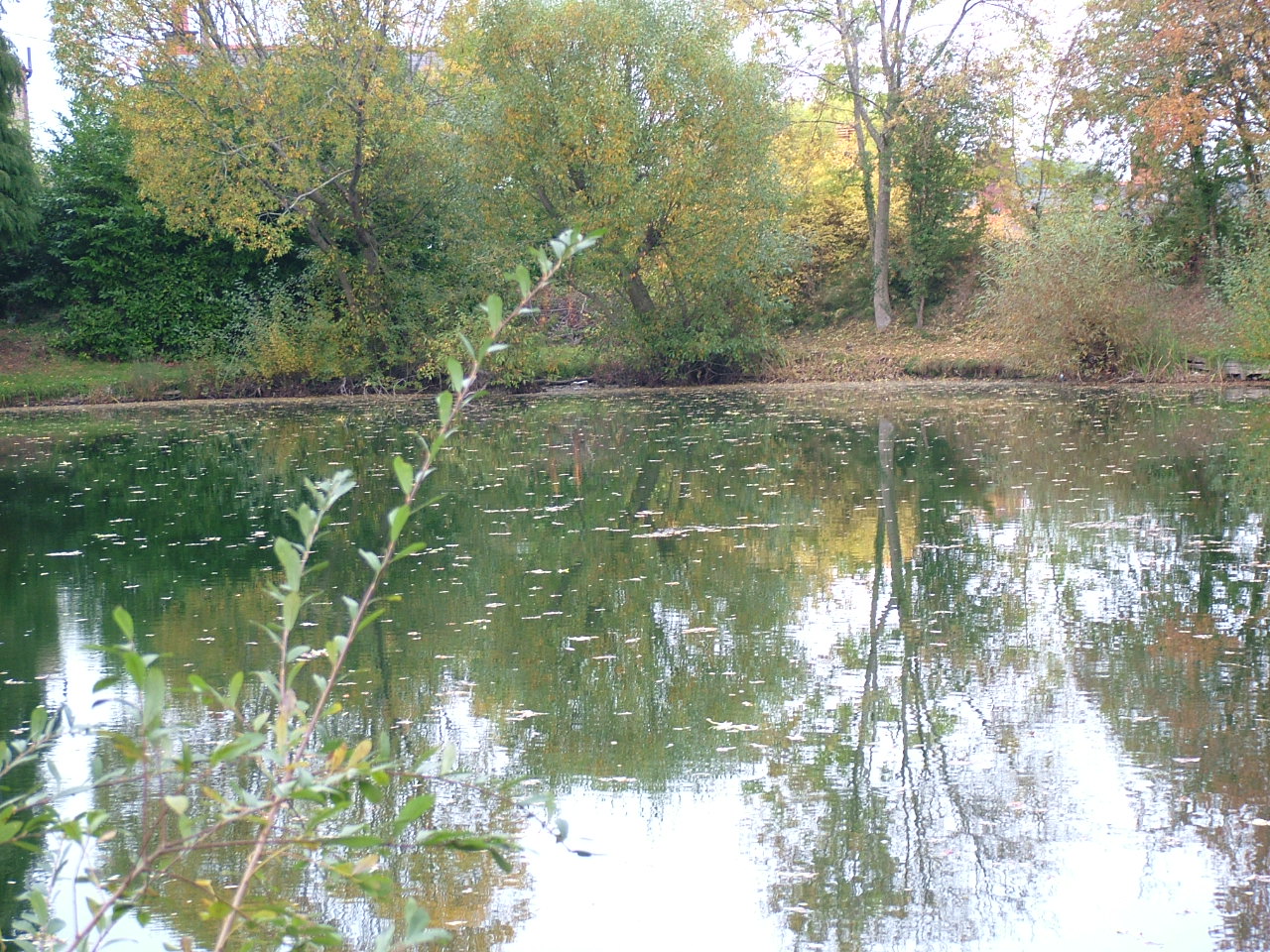
Autumn – to stock or not to stock? – that is the question
But in a large number – and perhaps the majority – of cases, a fishery owner or angling club could improve a fishery much more effectively and sustainably by enhancing the aquatic habitat and keeping most of the cash in the bank account.
Generally speaking, coarse fish are prolific breeders: a mature female roach is capable of laying anything up to 100,000 eggs. Given a willing male and suitable spawning habitat, a morning’s frenzied activity may result in a large number of fry being born just a few days later.
If a significant number of these youngsters see it through the first critical winter of their lives – and it’s a big ‘if’! – there’ll be thousands of additional mouths looking for food the following summer. The mathematics can be very simple: 1 + 1 = 10,000. The equation doesn’t always hold good, of course – predation, disease or pollution will take their tolls – but it does illustrate the potential for population expansion… for free.
Move on over
At its most basic, a stillwater fishery is just a piece of land covered in water. The quantity of fish it can support is limited by the fertility of the lake, just as the number of cows that can graze in a field is dictated by the quality of the grassland.
If the cattle become emaciated and they begin to die, I doubt that many farmers, if any, would double the size of the herd next year. So why, when faced with a parallel scenario, do some people order twice as many roach as last year and plonk them into their fisheries, expecting them to not only survive but to flourish?
To make matters worse, the fish available may be of unknown age, and what are colourfully described as “fast-growing, disease-free stock” may, in reality, be stunted, geriatric and riddled with ‘nasties’.
Some may survive long enough to be caught but, in the longer term, most will go to meet their maker. The same fate will await their replacements after anglers complain of poor catches and another lorry load of fish arrives.
Improve and develop
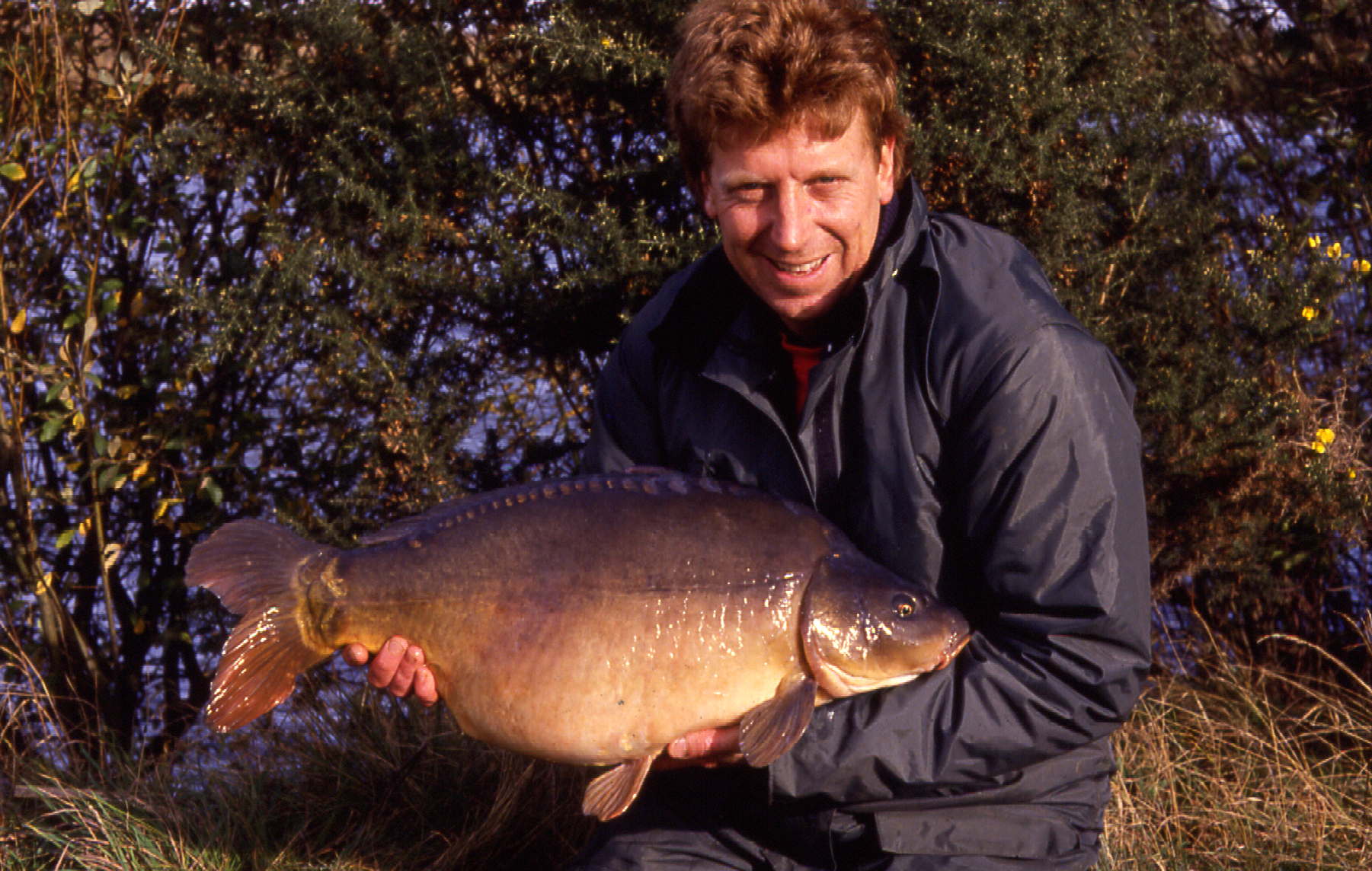
The result of extensive habitat improvement
Now a farmer faced with a field of anorexic cattle would try to improve environmental conditions to make the grass more productive; a fishery tenant or owner would be prudent to follow a similar path, enhancing the habitat for the fish already present and, maybe, add a carefully calculated number of ‘new’ stock fish.
I’ve given advice in previous blogs on several of the key habitat improvement measures that can transform a fishery. They include the use of fertilizers, either as well-rotted manure or inorganic products, which represent cheap and effective means of enhancing the nutrients essential for water plants, the base of the food web that supports fish.
In silted lakes, these plant foods may be present already but remain ‘locked up’ in the silt. Their liberation, through the judicious application of chalk or limestone compounds, will improve lake fertility, with the added benefit of stimulating silt reduction and, thus, increasing water depths.
Enhancing the community of aquatic plants, be they submerged, marginal or species with floating leaves, will provide fish with spawning sites, sanctuary from predators, areas of quiet refuge and rich sources of the associated invertebrate food.
These and other actions at a typical two-acre pool may generate some sweat for those undertaking the work, but you should get change from £150 or less. The worth of this investment will last for a good few years as existing fish benefit and the survival of their offspring increases. Alternatively, you may buy about 25lb of roach for that money and detect no meaningful improvement to the fishery. The choice, of course, is yours!
Making your introductions

Stocking a year old lake
If it transpires that fish introductions are appropriate, it is worth noting that in most productive, stillwater fisheries in Britain where water depths generally are less than about 12-15 feet, it has been discovered that the weight of fish per unit area (or fish standing crop) which can be supported is usually between 250-600lb/acre. This information has been obtained as a result of fish population surveys, fish rescues on stillwaters which have been de-watered, and direct counts following total fish kills.
The standing crop is governed by the fishery’s biological productivity, and this is influenced by water quality, the available plant nutrients, the depth, etc. In some coarse fisheries where common, including mirror, carp are present in large numbers, the standing crop can exceed 800lb/acre, and on heavily-fished still waters, where anglers’ baits and groundbaits make a significant contribution to the diet of fish, figures of 1,000-1,400lb/acre and more are not unusual. Such standing crop values also apply at fish farms where the fish are fed on supplementary foodstuffs.
Who ate all the pies?
Where there is a substantial carp population, these fish compete adversely with other, non-carp species for the supplies of invertebrate food. In this situation, carp will usually out-compete other species, which may eventually become emaciated and gradually die out as a result of outbreaks of stress-induced diseases and parasites. At many other fisheries, this competition does not begin to become important until carp comprise a significant proportion – often at least 40-50 per cent – of the total fish biomass. Note, however, that this finding does not apply to crucian carp, which for this purpose can be classed as non-carp species.
This competition rarely affects small fish, which rely on a planktonic diet that carp do not share. However, in order to grow larger than about six or seven inches, species such as bream and roach must alter their diet to include larger, bottom-dwelling invertebrates. In coloured, heavily-stocked carp fisheries, there may be large numbers of small, non-carp fish but few of their parents; in clear-water fisheries, where the young fish may fail to survive, there may be relatively few non-carp fish of any sizes.
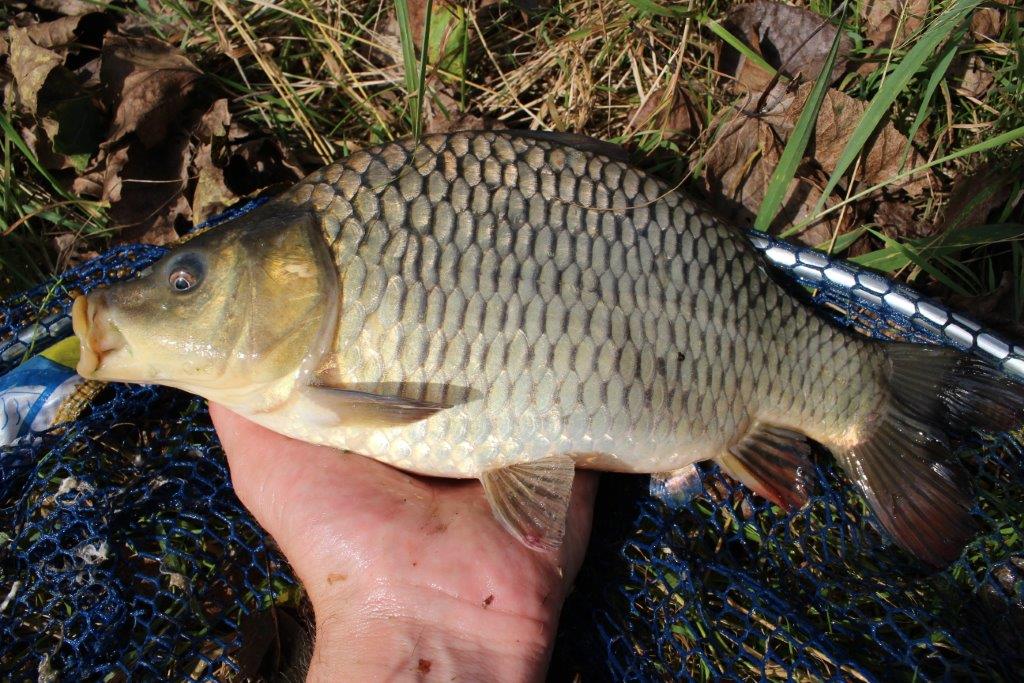
Fat fish are good fish
For the majority of coarse fish, the fry that survive during the first summer of their lives suffer extensive mortalities in the following winter. The mortality rate tends to be less if the fish have enjoyed a prolonged period of good summer feeding – notably during hot summer weather in fisheries where there is a rich ‘soup’ of small planktonic animals. For fish, it’s a case of big and fat is good.
However, young carp are far more susceptible to winter mortalities. There are total winter kills of first-year carp in most fisheries, for reasons which are not fully understood. This is why the number of carp in some fisheries can remain constant for many years.
Care for your newbies
Reasonably shallow, productive, new lakes should be capable of supporting – say – 450-500lb/acre of coarse fish by natural means. If they become fished intensively, this figure might increase to 800lb or more as a consequence of the introduction of anglers’ baits and groundbait on which fish will feed.
An initial stock density of about 250-400lb/acre is appropriate, although this could be enacted through a phased stocking programme. This measure should provide scope for the growth to larger sizes of the stocked individuals, as well as the survival and growth of their offspring.
SAS (Sizes and Sources)
With coarse fish, it is important that the stock fish are young, so that they have the opportunity to grow to larger sizes. If fish are obtained commercially, the purchase of two or more size groups helps to avoid the introduction of ‘all-old’ and stunted fish which may have little potential for future growth. Fish of six or seven inches and longer tend to survive far better than smaller individuals and if cormorant predation is severe, 2lb-plus fish may be required to ensure that they don’t become bird fodder.
Suitable fish will have to be purchased from a coarse fish farmer, preferably, or a fish supplier. The cost of fish obtained commercially varies, depending on their number and weights/sizes, and it is always best to buy by quality not cheap priced fish.
Good timing
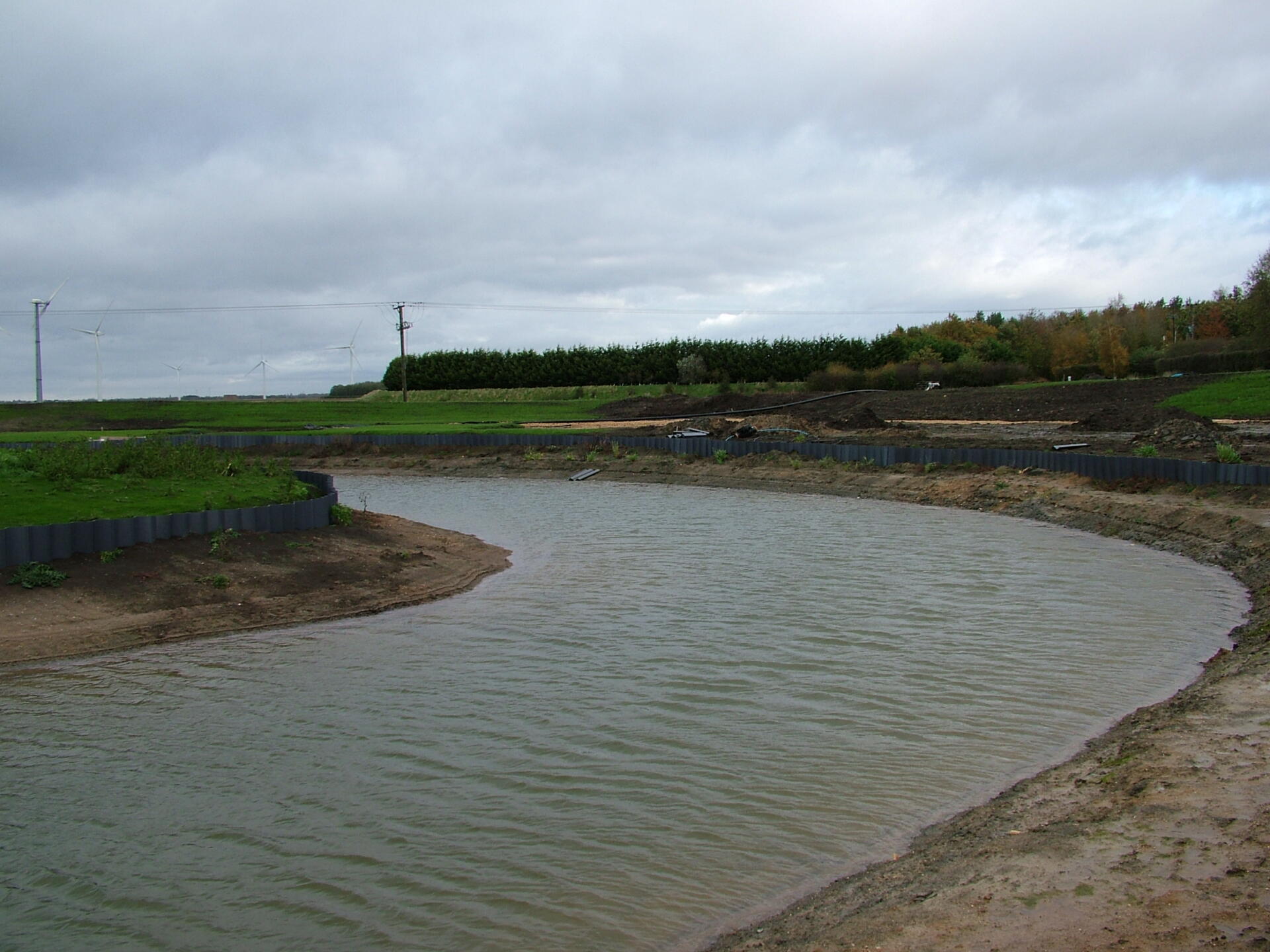
A newly-formed lake, but too early for fish
Once a new lake has filled with water and aquatic plants and animals have been introduced or start to become established, it would be sensible to let the fishery mature for a minimum period of one summer before fish are released. This should ensure the adequate development of the aquatic flora and fauna on which fish will rely for food and as spawning substrate.
However, restricted fish introductions could be undertaken sooner than this if it is necessary to establish the fishery as quickly as possible. Sub-maximum fish releases are appropriate providing the fish community can expand as the invertebrate fauna develops.
In any fishery, fish introductions during the warmer months are inadvisable. Because of higher water temperatures, fish are less easy to transport and become more stressed than during the cooler months. Fish stocking after September and before May could be undertaken without these problems.
Keep it legit
Under the provisions of the Salmon and Freshwater Fisheries Act, the prior written consent of CEFAS is required before fish can be introduced legally. Information and application forms to stock fish can be obtained from Gov.uk about this
It is essential that the source of these fish is investigated rigorously and that the fish are subjected to pathological examination to prevent the introduction of undesirable diseases and parasites. This is particularly important with any carp brought onto site: recently, there have been outbreaks of Koi Herpes Virus (KHV), a virulent disease that can cause severe fish mortalities. On no account should carp be introduced which could have been exposed to this disease.
And finally…
Huge sums are spent each year on fish stocking, and much of this money is wasted. Even if the fish are healthy, their survival will be jeopardised if the fishery into which they are released is incapable of supporting them.
Indeed, if there is a need for more fish, it is well worth examining why this is so and directing management efforts towards improving the situation – be it by providing better fish spawning opportunities, controlling predators, enhancing the water quality or the fertility of the fishery, removing or reducing silt, introducing suitable water plants, alleviating stress to fish, etc.
This is best achieved by drawing up a thoroughly researched management plan for the fishery and monitoring the effects of management work. This need not be a complicated exercise, but it can be helped greatly by seeking professional advice.
This can be achieved by contacting the Environment Agency or by engaging an independent fisheries management consultant. Advice from a fish supplier is rarely objective – relatively few suppliers are professionally qualified and all have a vested interest in selling fish!
Top Ten Tips
- If in any doubt, think first and stock at some later date. Obtain proper, professional advice on the alternative courses of action. Potentially, stocking fish is one of the most dangerous exercises for your fishery because of the threat of introducing life-threatening diseases and parasites. Overstocking leads to stress and – too often – the premature death of fish.
- There is no such thing as a ‘disease-free’ fish. If possible, ensure that the fish have been health-checked (but remember that this is no guarantee of the health status of the fish which are actually being stocked).
- Introducing carp into lakes already containing them is a potentially hazardous exercise. Consider using home-grown fish if at all possible, or create your own spawning or growing-on pond, or consult a specialist carp farmer who spawns and grows his own fish.
- In England and Wales you need the prior written consent of the Environment Agency before fish are stocked. The onus is on you to obtain this and never risk the threat of prosecution by stocking without consent. Details can be found at http://www.defra.gov.uk/aahm/
- Consider the essential needs of the fish and whether they will have enough food to enable them to grow properly. If this is in doubt, improve the habitat, undertake a small, trial stocking and monitor what happens.
- Ensure that your order is specific and is confirmed in writing. Keep all the documentation. An order placed with Honest Harry on his mobile ‘phone could end in tears.
- Cheap or cut-price fish are usually nasty – beware!
- Don’t accept what you haven’t ordered. Examine the fish on delivery and reject the order if the fish look damaged or diseased. Once they are stocked, it’s too late.
- Obtain a written receipt for the fish and for any payment you make.
- Any post-stocking fish losses should be recorded and a refund obtained. If large numbers of fish show signs of distress or begin dying, contact the Environment Agency or relevant authorities immediately.
Further Information
For further information on how to improve the management of your fishery to prevent winter fish kills, reduce siltation, and advice on most fishery-related matters, please don’t hesitate to contact me:
Dr Bruno Broughton B.Sc. (Hons), Ph.D., F.I.F.M., C.Env.
Fisheries Management Consultant
Tel: 01952 691515; Mobile: 07804 651402
Email: bruno.broughton21@gmail.com
Website: www.bruno-broughton.co.uk
Similar articles

A guide to adding accommodation for fisheries
How to increase the income of your fishery by adding accommodation for anglers in the form of lodges, huts, cabins, pods and other modular buildings to your fishery venue.
How to install foundations at your fishery
We delve into the challenges of waterside construction, outlining the advantages and disadvantages of various foundation types, and learn how to create durable, long-lasting structures that add value to your fishery.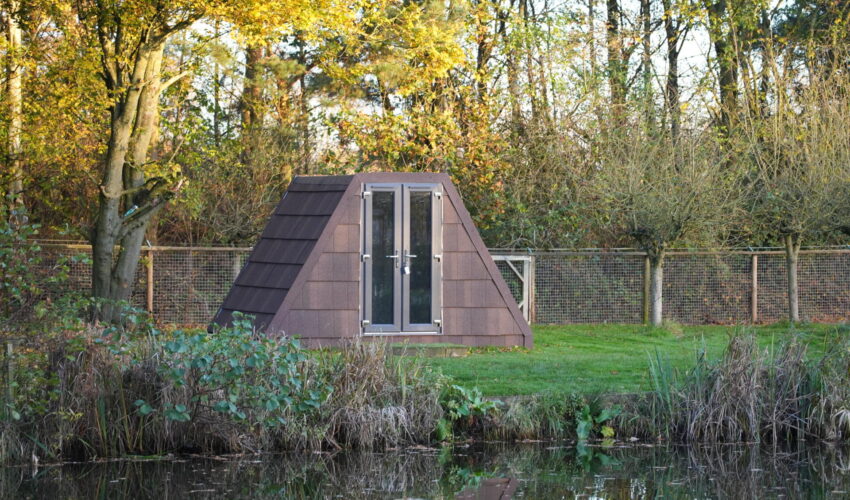
The latest angling pods hit the fisheries market
Join the growing number of fisheries which are boosting their income by installing Tardis Angling Pods – providing their customers with comfort and convenience while adding real profit to the bottom line.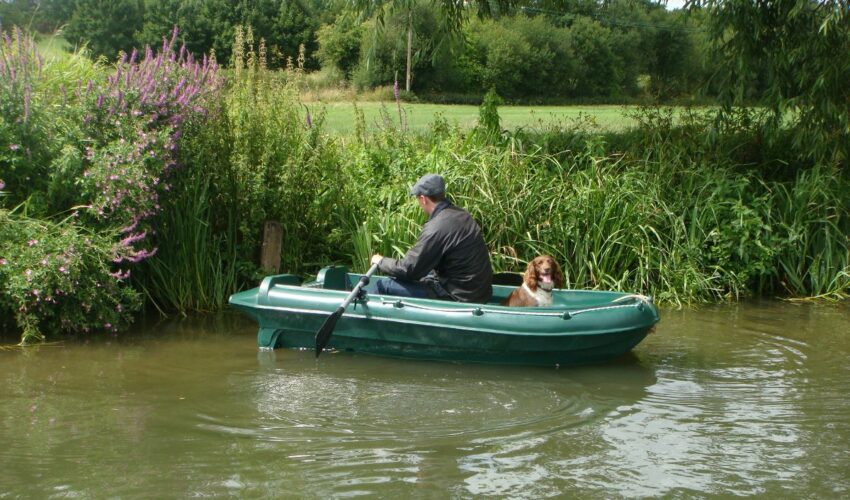
How to choose the right type of boat for your fishery
Whether you are a fishery owner looking for a boat to maintain your lakes or wanting a fleet of boats to let your own anglers get out on the water, choosing the right type of boat for the job can…
How lake fertilisation can improve your fishery and fish
Resident fishery management expert Bruno Broughton explores how lake fertilisation can help improve your fishery and explains how to go about it.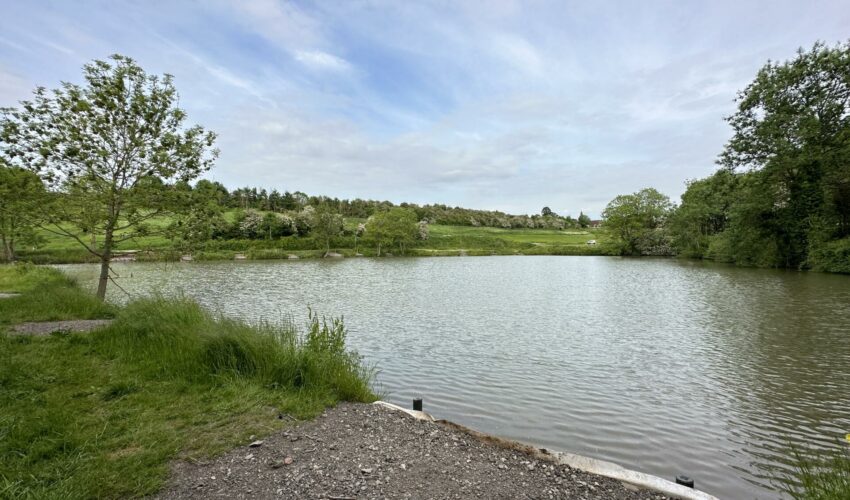
Make more money from your fishery!
Our ‘Top 10 Tips’ on how to make more money from your fishery this year. Not all are easy and most require some investment – but they will definitely help to increase the revenue from your fisherySearch by Region or County
Find new places to go fishing in your local area or county by choosing your destination below









Comments